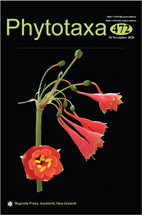Abstract
Among the tropical woody bamboos, the Melocanninae is one of the most clearly recognized subtribes morphologically and has also been consistently well delimited in molecular phylogenetic work. The relationships among those genera in this subtribe, however, have been contentious because of poorly understood generic delimitations, in part due to poor specimen material or insufficiently assessed morphological traits, sometimes exacerbated by poorly accessible provenances. We address the phylogenetic and taxonomic status of two groups which together include the largest number of species in this subtribe: the Neohouzeaua-Schizostachyum complex, distributed from India to South China, Southeast Asia and southwest Pacific, and the endemic Indian genus Ochlandra. Three Neohouzeaua species (including the generic type), 12 Schizostachyum species (including the generic type and several species of uncertain placement), together with five species of Ochlandra and representatives of Cephalostachyum, Melocanna and Pseudostachyum were assessed in a molecular phylogenetic analysis together with members of other well-distinguished subtribes. Members of Neohouzeaua and Schizostachyum align into two main groups that were not completely well-supported statistically but which members possess mostly reflexed culm leaf blades, or mostly erect culm leaf blades. Other characters which provide obvious differences between taxa, such as the number of flowers in a pseudospikelet, fusion of filaments into a staminal tube, and presence of lodicules, were inconsistent between these groups. Neohouzeaua and Schizostachyum cannot be clearly distinguished in either morphological or molecular terms, and thus are united under the latter name, which takes precedence. In reviewing names in Neohouzeaua and their basionyms, several lectotypifications are designated. Three new combinations in Schizostachyum are proposed. On the other hand, Ochlandra forms a distinct clade and its monophyly is demonstrated, supported by clear morphological characters.

